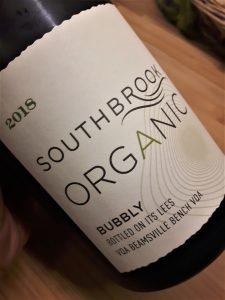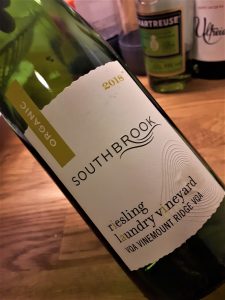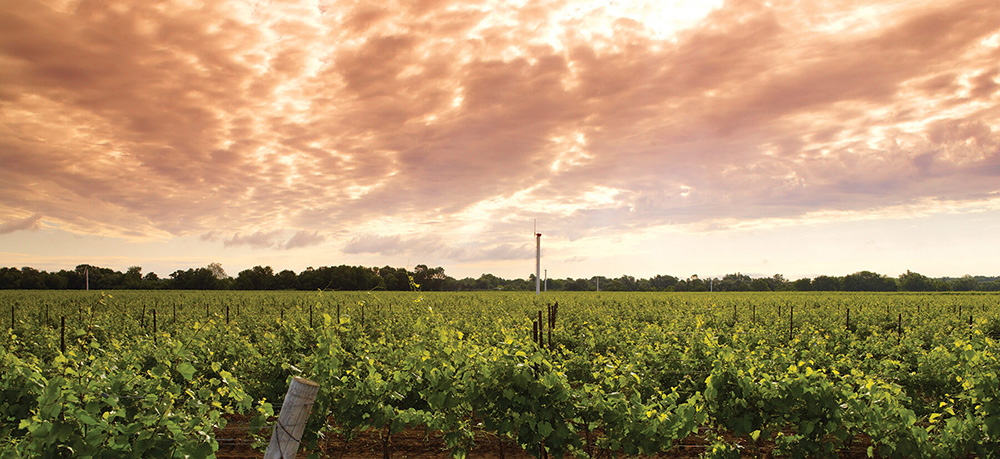Photo credit: Flat Rock Cellars
Vintage after vintage, the wines of Flat Rock Cellars stand out for their approachable style and fine value for money. One could be forgiven for assuming that such consistency must be the result of formulaic winemaking. However, that, as I recently found out, is far from the case.
Ed Madronich opened his five-level gravity flow winery at the top of Niagara’s Twenty Mile Bench in the early 2000s. His ambitions were clear from the outset. From the careful mapping of vineyard blocks, to the selection of high-quality clones, to the installation of a geothermal heating and cooling system, and Sustainable Winemaking Ontario certification, the goal of making eco-responsible fine wines was clear.
Several equally impressive Ontario wineries got their start around the same time, investing similar time, money, and resources, with equally lofty objectives. What sets the wines of Flat Rock Cellars apart is their accessibility. Experimentation is rife at the winery, as it is in so many cellars, yet here, consumers are invited to follow along. Flat Rock bottles their trials so that customers can gain a deeper understanding of what different clones, terroirs, or winemaking methods bring to their wines.
In 2006, Flat Rock Cellars released a “clone research pack” consisting of four 2004 vintage Pinot Noirs. Three of the four wines were made from different Pinot Noir clones (Dijon clones 115, 667, and 777 for the nerdier among you). The fourth wine was a blend of the three clones that makes up the winery’s “Gravity” bottling. The pack was accompanied by a simple information sheet clearly explaining the impact different clones can have on a wine’s aromas and mouthfeel.
In the 2011 vintage, Pinot Noir was again featured, but this time from three different vineyard sites, offered as separate bottlings. The Pond Block, from a west-facing slope with abundant afternoon/evening sunshine and medium clay soils produced a ripe fruited, light bodied, early drinking red. The Summit Block, from a higher altitude planting, on a cool, windy, north-facing plot, gave a deep coloured, fuller bodied, bright acid style. Finally, the Bruce Block, the estate’s most northern parcel, with a south-facing slope, loamy soils on a limestone bedrock, yielded a structured, tannic wine requiring a few years’ cellaring.
The most recent experimental release is the Nature vs. Nurture series of 2017 vintage Pinot Noirs. The goal here is to show the impact yeast can make on wine flavour and texture. Both wines hail from the same vineyards and were vinified and aged in the same way. The only difference is that the Nature cuvée was made with wild yeast (natural yeast populations living on grape skins, as well as vineyard, and winery surfaces), while the Nurture was made with cultured yeast. The W15 strain was selected for its bright fruit and production of high glycerol levels giving a rounded mouthfeel.
Each of these experimental releases serves to draw back the curtain and teach consumers about different facets of the wonderfully complex world of winemaking. Efforts like this are to be applauded wherever they occur, but perhaps, especially in Canada. Ontario is a relatively young wine region still struggling to overcome an image of sweet, poor quality wines that dominated liquor store shelves into the 1980s.
While top-quality wine is now produced from coast to coast, we Canadians have been slow to adopt our wine industry. According to the Wine Growers Ontario organization, Canada is one of the lowest consumers of domestic wine among the top 16 largest wine consuming nations world-wide.
We are far quicker to champion the produce from our local farmers than our home-grown wines. And in a time where our wineries are suffering from the effects of dwindling tourism, limited capacity and/or closures at cellar doors, they need our support more than ever!
My notes from a recent: wines of Flat Rock Cellars (virtual) Pinot Noir tasting session:
Flat Rock Cellars Nature Pinot Noir 2017
Pale ruby in colour with brick hues. Wonderfully perfumed on the nose, with ripe strawberry, raspberry, floral, and tea leaf aromas. Reminiscent of Marlborough Pinot Noir aromatics. Really vibrant on the palate, with a silky texture and an initial lightness that gives way to surprising depth of tangy raspberry and orange peel flavours. Medium weight fine grained tannins and just a whisper of spicy, vanilla oak on the finish.
Where to Buy: very limited quantities, inquire with winery
Flat Rock Cellars Nurture Pinot Noir 2017
Marginally deeper in colour than the Nature, with a more discreet nose initially. With aeration, the Nurture reveals ripe red and dark fruit notes underscored by hints of mocha. Mouth-watering acidity brings lift and definition on the palate. This is a fuller, slightly more taut wine, with dark chocolate flavours mingling with tangy red berry and dark fruit flavours. Moderately firm tannins frame the delicately oaked finish.
Where to Buy: very limited quantities, inquire with winery
Flat Rock Cellars Estate Pinot Noir 2018
This, for me, is Flat Rock’s best value bottling. The Estate Pinot Noir has easy drinking appeal vintage after vintage, with its perky nose of ripe cherry, red berries, and hints of menthol. The palate hums with juicy acidity and tangy red berry flavours on a smooth, lightweight backdrop. Best slightly chilled (16 – 18°C).
Where to Buy: SAQ (23.95$), LCBO (22.95$)
Flat Rock Cellars Gravity Pinot Noir 2016
The Gravity cuvée is a weightier, fuller throttle Pinot Noir than the estate. Marked cedar and mocha notes on the nose, with underlying red currant, cherry, and herbal hints. Crisp acidity on the attack, with a dense, velvety core and overt roasted coffee, baking spice flavours overlying discreet red fruit notes. The tannins remain somewhat grippy. Cellar for 2 – 3 years further or decant a couple of hours before serving.
Where to Buy: SAQ (38.00$), LCBO (34.95$)
Flat Rock Cellars Riddled Sparkling 2017
Pleasantly open on the nose with ripe fruited notes of yellow apple, apricot, and honeyed hints. Crisp and lively on the palate, with firm, persistent bubbles, medium body, and a rounded, delicately creamy texture. Finishes dry, with bright apply flavours and intriguing hints of baker’s yeast. A bargain at under 30$ LCBO.
Blend: 61% Pinot Noir, 39% Chardonnay
Where to Buy: LCBO (27.75$), Québeckers…there is a shameful lack of Canadian bubbly at the SAQ, go forth & pester your local store staff (or just inquire with local agent: Langevin Inc.)
Flat Rock Cellars Riddled Sparkling 2010
This bottling is largely sold-out. It was sent to me to show how well sparkling wines can age when sealed with a crown cap (like beer bottles), which is Flat Rock Cellars’ preferred bubbly closure. The results are surprising. At ten years’ of age, this is a remarkably youthful wine, with its pale straw colour, and discreet aromas of chamomile, beeswax, and lemon. Very fine, silky bubbles and racy acidity on the attack, giving way to an expansive mid-palate brimming with roasted almond, brioche, and crème caramel flavours, befitting its 5+ years of lees ageing. The finish is long and layered, with bright citrus notes lifting the deeper, torrified notes.
Blend: 100% Chardonnay







